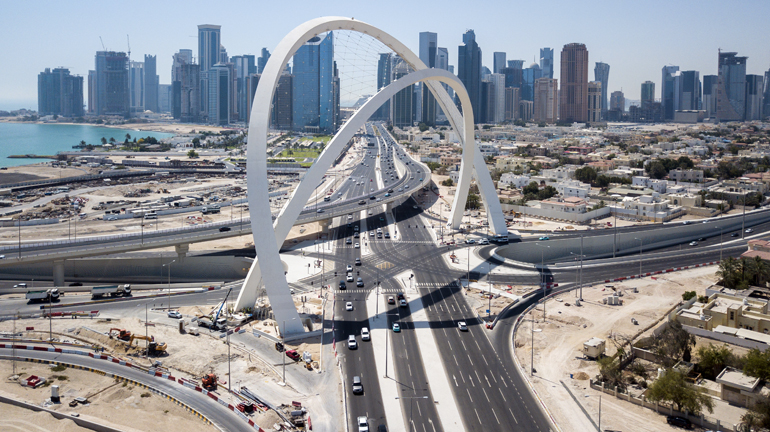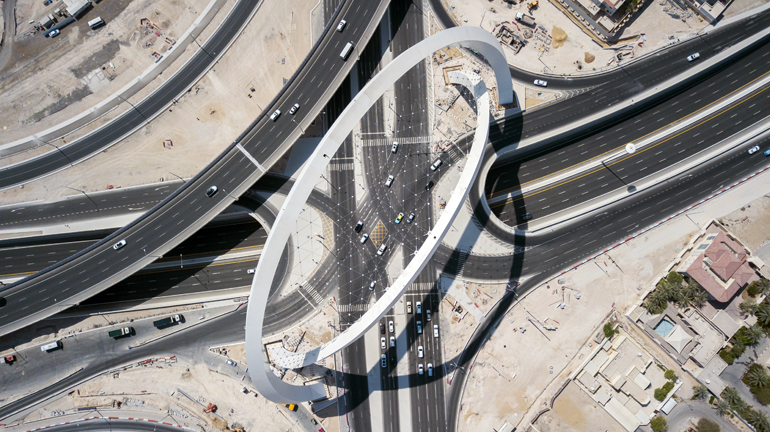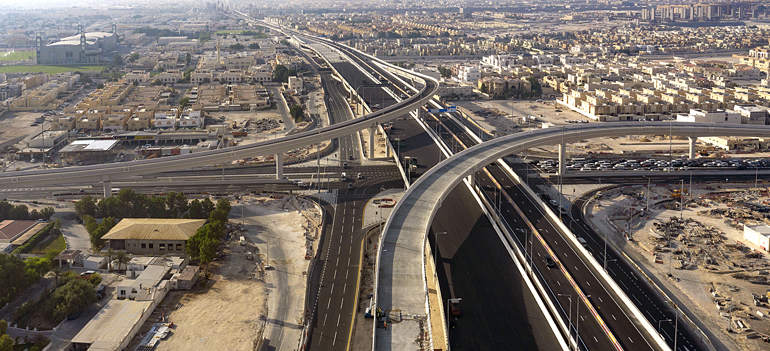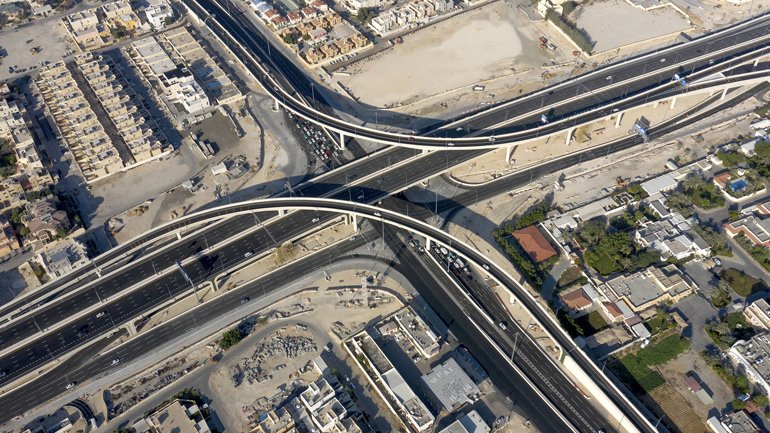
Latest News
- Hyundai E&C Signs PPA for Solar Renewables with Glennmont D&D Solar Holdings
- Hyundai E&C to Embark on UK SMR Project forging Korea-US-UK Technology Alliance
- Hyundai E&C Consolidates Leading Position in Concrete Safety and Quality Technology
- Hyundai E&C Selected as Preferred Bidder for Large Nuclear Power Plant in Bulgaria
- Hyundai E&C Attains “Leadership A” in CDP's Climate Change Assessment
[Our Project & People] Lusail Expressway project & Construction of Al Bustan Street South project, Looking toward 2022 World Cup (1)
Construction of a variety of infrastructures is being on the way in Qatar ahead of the grand opening of the World Cup in November 2022. Here, Hyundai E&C have conducted the Lusail Expressway project connecting the center of Doha and the Pearl-Qatar where the Amiri Diwan Royal Palace of Qatar and high-end residential complexes are located, and the construction of Al Bustan Street South project to expand the Al Bustan Street running north and south of the capital. Although the two roads already opened to the public, additional construction works are underway on the client’s request. Let’s listen closely to the stories of the two construction sites.
Lusail Expressway project selected as ENR’s global best project

The 100-meter-high, arch-shaped structure is a symbol for the Lusail Expressway.
Eye-catching arches stand tall on the way from Hamad International Airport to Lusail Iconic Stadium. This 100-meter-high structure built in the Wahda Interchange will be the first landmark that visitors to the 2022 World Cup will meet.

Arch-shaped structure is a symbol for the Lusail Expressway.
The Lusail Expressway project was designed to build the large-scale arches and expand the 5.8-kilometer expressway and 5.7-kilometer access road in the section between the center of Doha next to the airport and the Pearl-Qatar, the commercial and residential area near Lusail City. Along with the 18-lane road, the project includes the construction of 10 tunnels, four bridges, and a variety of facilities including microtunnels, water supply and drainage system, substations and telecommunication lines. The construction began in May 2012, and the expressway opened in December 2017. However, the completion of the construction was delayed due to more than 300 design changes by the client. Hyundai E&C is currently working on additional construction works on the client’s request.
.jpg)
Simultaneous construction of the underpass, bridge and arches at QLUS site.
The biggest challenge facing the construction site was to conduct the construction without interference from local traffic flow in Qatar’s most populated area with many infrastructures. To build a temporary bypass road in need to solve this problem, the builder had to change the traffic signal system, install safety-related facilities and obtain permissions for road operation. The relocation of underground facilities concerning water supply and drainage, and electricity had to precede the commencement of the main construction. On top of this, the builder consulted with 25 local institutions and obtained 200 approvals and permissions with regard to the relocation of such facilities. As a result, the temporary bypass road was well received by locals as they mistook it for an already completed road.
.jpg)
Construction of the North Canal Crossing Bridge in the Pearl Interchange. The new bridge was built after the demolition of the existing bridge.
For over five years, a huge amount of resources were funneled into the project such as 95,000 tons of rebar, 450,000 tons of asphalt and 200-kilometer pipeline used to establish electricity and telecommunication. About 5,000 workers from 26 countries were mobilized, and their working hours reached as much as 69 million hours. Hyundai E&C put all energy into safety and schedule management. As a result, the builder’s excellent project management was selected by ENR as a Global Best Project Award Winner in October 2018. Hyundai E&C successfully completed the construction of the Lusail Expressway in Qatar through its unique and powerful drive and technological prowess. The Lusail Expressway will serve as a remarkable landmark in history of the kingdom.
Construction of Al Bustan Street South project builds Qatar’s longest bridge

Drone view of QABU site.
Qatar’s Al Bustan Street is the most beautiful from the sky. The combination of a stretch of the road and the U-shaped overpass adds an artistic touch to the expressway. The construction of Al Bustan Street South project, a part of four sections of the 13-kilometer Sabah Al Ahmad Road running north and south of Doha, was designed to build an eight-lane overpass and improve the Al Waab Intersection in the downtown of the capital. Although the client originally planned to build an underpass, Hyundai E&C was awarded the project by suggesting an alternative design for overpass construction, along with competitive construction costs.

Drone view of QABU site.
The construction kickstarted at the end of September in 2017, and 99 percent of the construction has been finished. Since the expressway already opened in 39 months of the construction period, the project can be considered completed. However, it appears to take more time to finish up the project due to the client’s design changes and additional requests, as is the same with the Lusail Expressway. The project includes the construction of the eight-lane overpass, relocation of water supply and drainage system, expansion and pavement of the existing road, and landscaping. To build a bypass road which was crucial to such complex construction project, Hyundai E&C went through various procedures such as the securing of sufficient space for the construction, construction of underground facilities, construction of bridge structures, and demolition of the temporary bypass road.
What was more challenging than the complicated construction environment was the client’s requests. Over one year after the completion of the construction, the client asked the builder to additionally build a ramp which was not included in the initial design plan and to advance the construction schedule for the opening of the road. In response to these, workers at the construction had to be on their guard at all times throughout the construction period.
.jpg)
PSM was used to build the overpass at QABU site.
Hyundai E&C used PSM (Precast Segmental Method) in an aim to meet the tight schedule. In PSM, three-meter-long bridge girders were fabricated, moved to the construction site and placed together. Although PSM can make quality management easier and shorten construction period, the use of PSM requires a higher level of technology to manage complicated road alignments. As this was the first time in 20 years that the builder applied the method, it examined a wide range of case studies and cooperated with designers and relevant experts. The expressway opened to the public on December 18, 2019, and the local media reported that it was the country’s longest overpass. The client and PMC said in chorus that they would like to work with Hyundai E&C for future projects to come. All employees at the construction site expressed a determined resolution by saying that they would do their best to finish up the construction to live up to their reputation.

